 Fiumicino 5
Fiumicino 5
Fiumicino 5 was a 'vivaria', i.e. a boat equipped with a container full of water in which to keep the catch live in optimal conditions. It is probable that these boats were used to carry goods directly to Rome.
With the progressive population increase, marine fishing had become insufficient to cover the food needs of the entire population. Fish had thus become a luxury product, reserved for the classes with greater purchasing power residing in the capital.
To make up for this shortcoming, the use of aquaculture gradually increased, both in marine basins and in fresh water, obtaining products with a more affordable price.
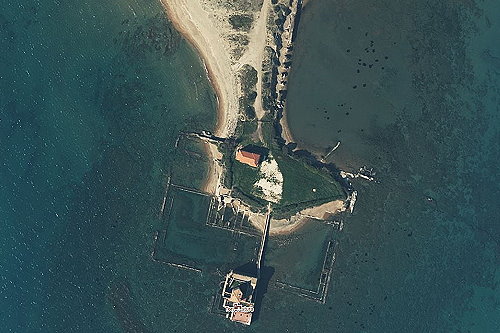
Some of the personalities who dedicated themselves to this commercial activity have left unsuspected traces up to the present day: Gaius Sergius Orata (2nd century BC) as well as being considered the inventor of the hypocaust heating system used in spas and luxury homes, was one of the first entrepreneurs to deal with aquaculture. His specialty was oyster farming, but some believe that the prized fish of the same name, Sparus aurata, takes its name from him.
It is also said that the moray eel has had this name in memory of the leader Lucius Licinius Murena (1st century BC) who was the first to breed it.
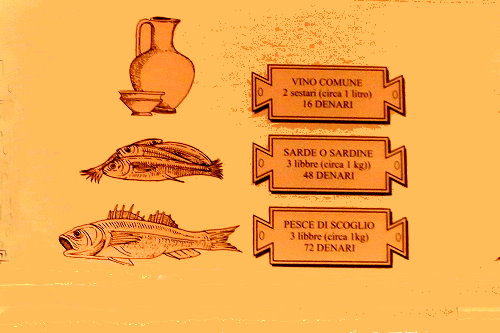 In the third century, the emperor Diocletian issued the Edictum Diocletiàni de pretiis rerum venalium with which he fixed the selling prices of many necessities, including fish.
In the third century, the emperor Diocletian issued the Edictum Diocletiàni de pretiis rerum venalium with which he fixed the selling prices of many necessities, including fish.
It may be interesting to examine it in detail to find out which were the most widespread and appreciated species at the time.
Naturally, this task is reserved for experts, the only ones able to decipher the terminology used by the ancients for marine species.
For comparison, keep in mind that the edict set the price of a chicken at 30 denarii and that a pondus, or pound, corresponds to about 327 grams.
| piscis aspratilis marini Ital(icum) po(ndo) I | (denarii) viginti quattuor (24) |
| piscis secundi Ital(icum) po(ndo) I | (denarii) sedecim (16) |
| piscis flubialis optimi Ital(icum) po(ndo) unum | (denarii) duodecim (12) |
| piscis secundi flubialis Ital(icum) po(ndo) unum | (denarii) octo (8) |
| piscis salsi Ital(icum) po(ndo) unum | (denarii) sex (6) |
| ostriae n(umero) centum | (denarii) centum (100) |
| echini n(umero) centum | (denarii) quinquaginta (50) |
| echini recentis purgati Italicum s(extarius) unum | denarii) quinquaginta (50) |
| echini salsi Italicum s(extarius) unum | (denarii) centum (100) |
| sphonduli marini n(umero) centum | (denarii) quinquaginta (50) |
| casei sicci Ital(icum) po(ndo) unum | (denarii) duodecim (12) |
| sardae sive sardinae Ital(icum) po(ndo) unum | (denarii) sedecim (16) |
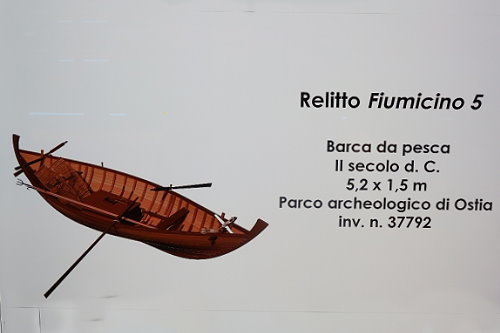 But let's get back to Fiumicino 5.
But let's get back to Fiumicino 5.
This is our live fish transport boat.
As we see, it's a vessel of modest size, not so different from some undecked vessels still in use in small-scale fisheries today, even in industrialised countries.
It is assumed that it had between two and three people onboard, but could almost certainly also be managed by a single person.
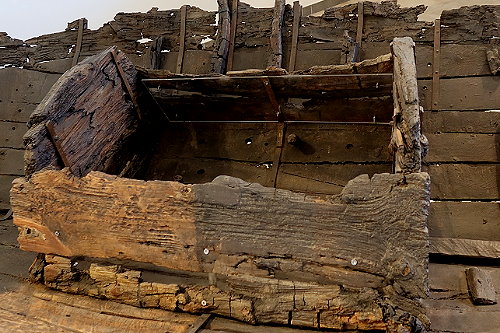 The vivarium has numerous holes on the bottom, intended for the exchange of water when necessary.
The vivarium has numerous holes on the bottom, intended for the exchange of water when necessary.
They were otherwise closed by pine wood caps.
The vivarium was equipped with a folding lid, to keep the contents safe, but also probably to prevent the fish from escaping in case of rough seas.
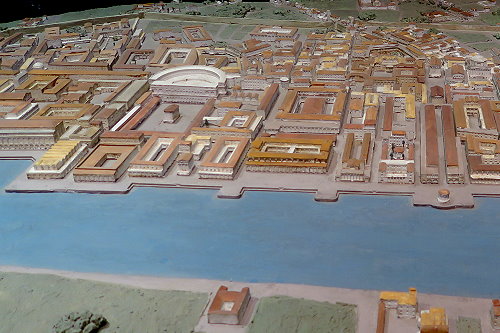 A lot remains to be explored and told starting with the reconstruction to the right.
A lot remains to be explored and told starting with the reconstruction to the right.
More is to be said about the Ship Museum in Fiumicino, the Portus and Ostia and even about much else.
We shall talk about that.








